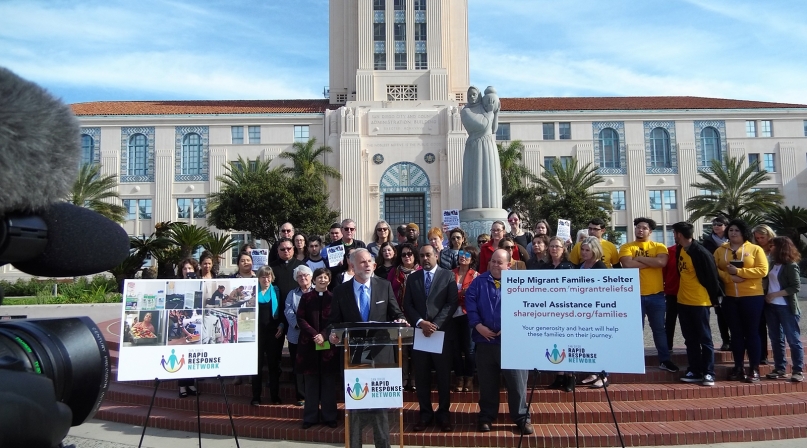San Diego County OKs asylum seekers shelter

Key Takeaways
Asylum seekers crossing the border from Mexico into San Diego County now have a place to stay before meeting their sponsors after the federal government abruptly discontinued its “Safe Release” program, leaving local governments and non-profits to fill the void.
“When they stopped the program we had a lot of people, mostly families, being dropped off at McDonald’s or the bus station with no way to get to their sponsors, it was a very unfortunate situation,” said San Diego County Supervisor Greg Cox, who also serves as president of NACo.
“We didn’t want to see those families tossed into our neighborhoods without any support or guidance,” Cox said.
The county also didn’t want any problems with safety, homelessness or public health. Non-profits stepped in to make space for the asylum-seekers and had to move five times over a short time period.
That led to the county board of supervisors approving the use of an old county courthouse for immigrants seeking asylum who have sponsors. Typically, people who have sponsors spend about 72 hours in a shelter. Migrants will have access to the building once they are released by immigration authorities. About 93,000 migrants claimed asylum in the United States in fiscal year 2018.
The Board voted 4-1 late last month to lease the old county courthouse building for $1 to a non-profit so they can use the building as a shelter. One of the non-profit’s network groups, Jewish Family Services, will be responsible for the costs of opening, operating and maintaining the shelter.
The measure was proposed by Cox and fellow Supervisor Nathan Fletcher.
“It’s a good day,” Fletcher said after the vote. “The county of San Diego is stepping up and showing to not only address the asylum issue with compassion and humanity, but also to ensure public safety, public health and that we do not compound the homeless situation.”
Meanwhile county officials are working with their counterparts in the city and the state to come up with more long-term solutions, Cox said.
“These are migrants who have been deemed by the federal government to have a credible claim for asylum,” he said. “They are legally in this country. They have to have a sponsor and in most cases they’re outside of California. They’re going all over the country. I had a chance over the Christmas holidays to go on a tour of the current location. It was a real eye-opener. They’re usually here 24 to 48 hours. Non-profits have come together to work with them to find out where they’re going, arranging for bus transportation or airfare to get them to their sponsor. Their court dates will be wherever their sponsors are located. Our goal is to assist the non-profits to provide a safe waypoint to help them as they move to their sponsor’s location.”
The former county courthouse is slated to eventually be demolished, and in its place, new affordable housing will be added; the shelter for asylum seekers is slated to stay open until the end of the year and won’t interfere with the timeline for the new development.
The old courthouse opened in 1961, replacing a courthouse built in 1888.

Attachments
Related News

County Countdown – Dec. 15, 2025
Every other week, NACo's County Countdown reviews top federal policy advocacy items with an eye towards counties and the intergovernmental partnership.
Stretching small opioid settlement allocations helps funding do more
States and localities are set to receive $56 billion in opioid settlement dollars over an 18-year period, but not every county that receives settlement funding will get enough to build out infrastructure.
